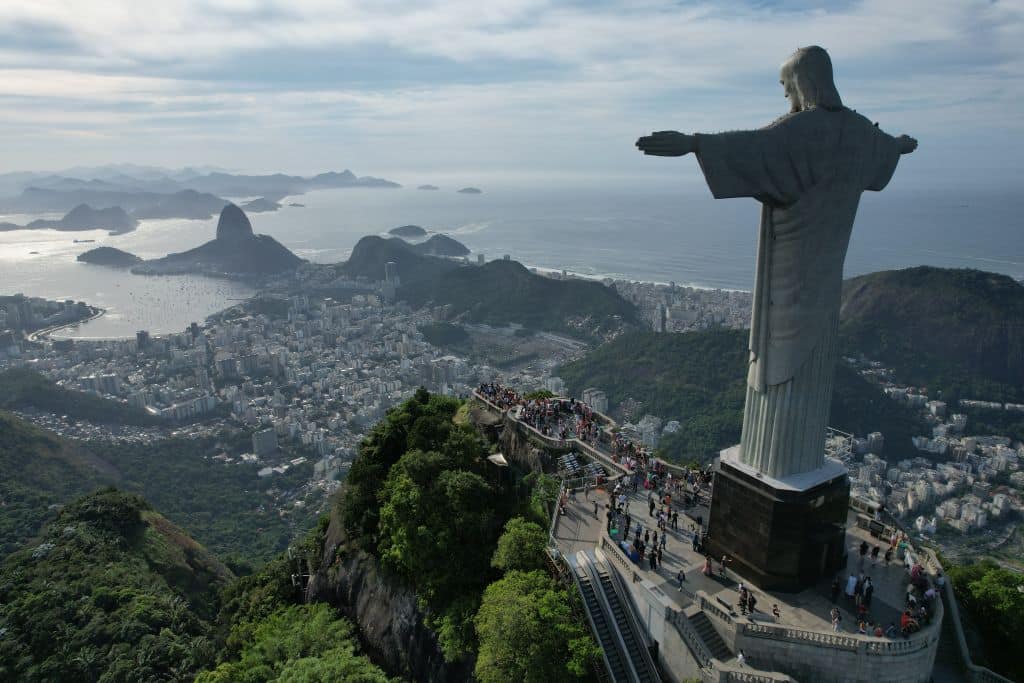A Brazilian tourist died during a visit to the Christ the Redeemer monument in Rio de Janeiro on 16 March, reportedly due to the lack of medical services in the area.
The tragedy led the local authorities to shut one of Brazil’s most popular tourism destinations the following day. The park where the giant statue is located was only reopened on 18 March after the Catholic rectory at the Christ the Redeemer Sanctuary hired an ambulance and kept it in the complex in order to offer medical support to tourists – despite the fact that it’s not up to the Church to provide any such service in the area.
As a result, the Archdiocese of Rio de Janeiro hopes the monument’s management could either be transferred to it the archdiocese or that the reservation around the statue can come under the responsibility of the city municipality, so that another tragedy like the one on 16 March won’t occur again.
Fifty-four-year-old Alex Duarte, a tourist from the Brazilian state of Rio Grande do Sul, was going up the steps that lead to the base of the statue on Sunday morning when he suddenly felt ill. CCTV footage shows how different people tried to help the man and performed cardiac massage, including his niece and a priest from the Sanctuary.
It was 7:39 a.m. when he fainted, an ambulance arrived at 8:13 a.m., when nothing more could be done for the man. The paramedics confirmed his death nine minutes after they arrived. His body was sent to a hospital in the city, where it was confirmed that Duarte had a heart attack.
Duarte’s death sparked outrage in Brazil. His niece complained on social media about the fact that the monument doesn’t have an ambulance or adequate medical services. In fact, the park’s medical facility was closed at the moment of the emergency. The company in charge of providing services at the monument claimed that the doctor’s office only opens at 8 a.m.
The Sanctuary of the Christ the Redeemer issued a statement that day critiquing how the park “doesn’t have an ambulance, universal accessibility, drinking fountains, volunteer fire brigade, restrooms with adequate accessibility, escalators and elevators in full service, internet and cellphone signal”.
The <em>Institute Chico Mendes of Biodiversity Conservation</em> (known in Brazil as ICMBio), the federal government’s agency in charge of taking care of national parks and reservations, replied to the archdiocese’s enquiries by stating that it is up to the companies that have the concession to access the park to offer services in the area and to provide medical support to tourists.
The Sanctuary and the monument are located inside the National Tijuca Park, a federal forest reservation supervised by the ICMBio. According to Father Omar Raposo, the Sanctuary’s rector, the ICMBio agency doesn’t receive enough money from the federal government and is unable to adequately take care of the park.
“That’s the most important tourism symbol in Brazil. Unfortunately, the infrastructure of the monument is insufficient to handle the large number of tourists that visit it every day,” Raposo told <em>Crux</em>.
Run-ins between the ICMBio and the Sanctuary staff over the management of the Christ the Redeemer monument are not new. In 2021, Raposo denounced how he and other priests had been impeded from getting into the Sanctuary on a number of occasions by ICMBio employees.
“But this time, the problem is one thousand times worse, because a person died here," he said.
After the State government shut down the site on Mar. 17, Raposo decided to pay for an ambulance himself, so the park could be reopened. The ICMBio also hired an ambulance on the same day. Coincidentally, after the monument reopened on 18 March, a Danish tourist felt ill as he was climbing up the path to the monument. He received medical attention in one of the ambulances and was taken to a hospital, being released a few hours later.
“Another tragedy could have happened. Thank God we decided to bring that ambulance here,” Raposo said.
Since last year, the Sanctuary has been pressuring different authorities to change how the site is managed. A bill was introduced by a congressman, for instance, with the goal of transferring the area of the monument to the remit of the archdiocese, which would be allowed to take care of it the way it wants.
“Another bill is being introduced in the Chamber of Deputies in order to transfer the management of the Tijuca Park to the city of Rio de Janeiro,” Raposo said.
He said that the city government is much more prepared to deal with the challenges and tourism pressures involved in managing the park, which has also been partially occupied by favela dwellers.
“We have been working side by side with the city government on a number of initiatives. I think that bringing the park’s administration to the city would be a very positive solution. I’m hopeful about it,” Raposo said.
<em>Photo: The Christ the Redeemer monument, Rio de Janeiro, Brazil, 29 March 2023. (Photo by Wagner Meier/Getty Images.)</em>



